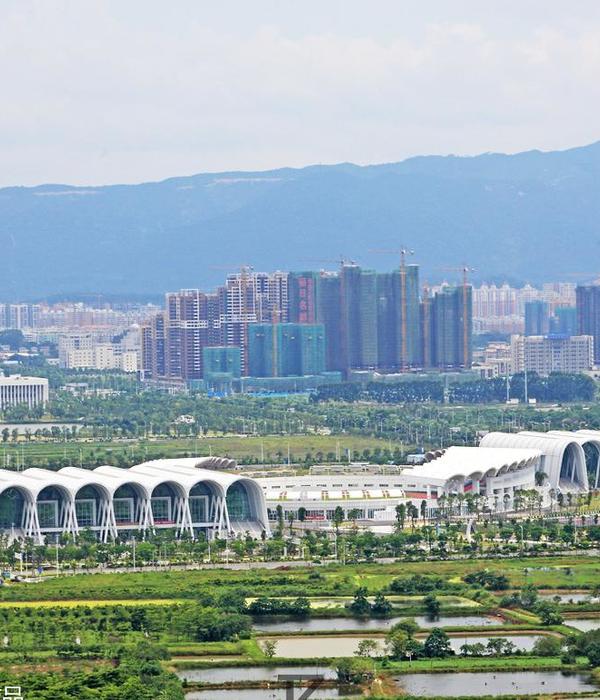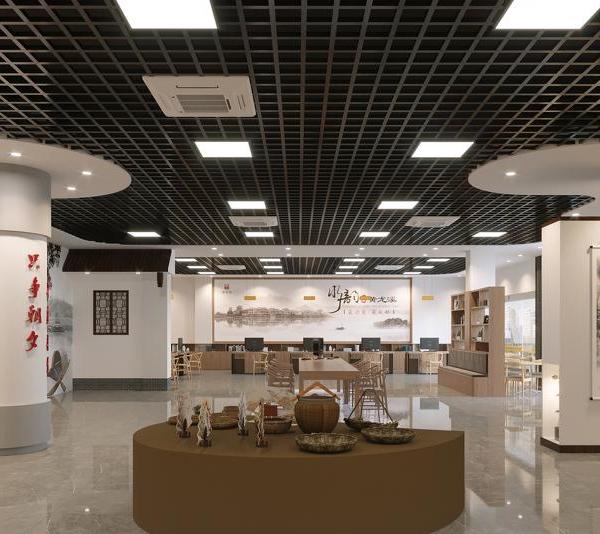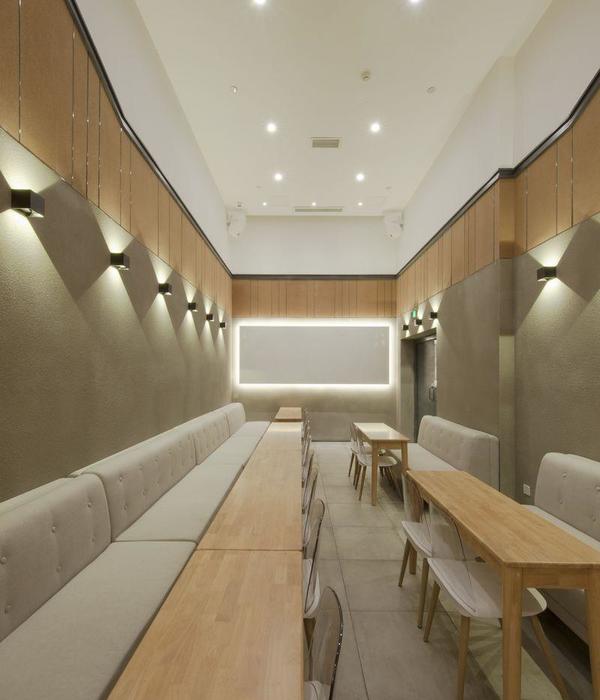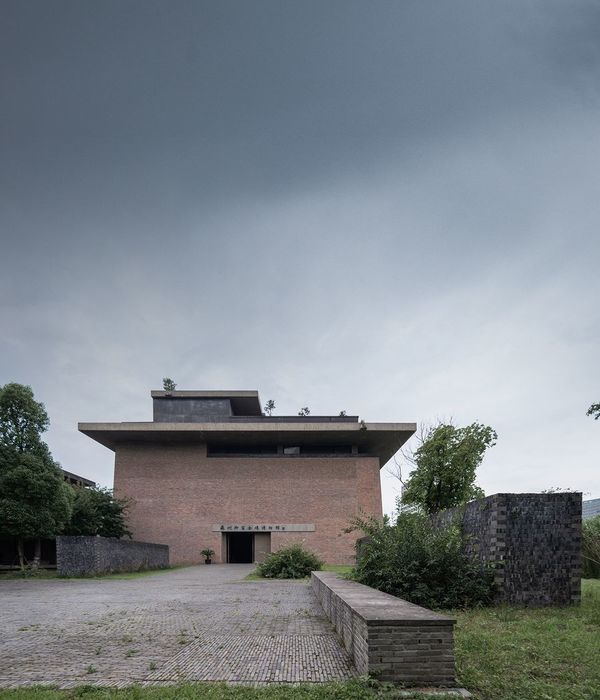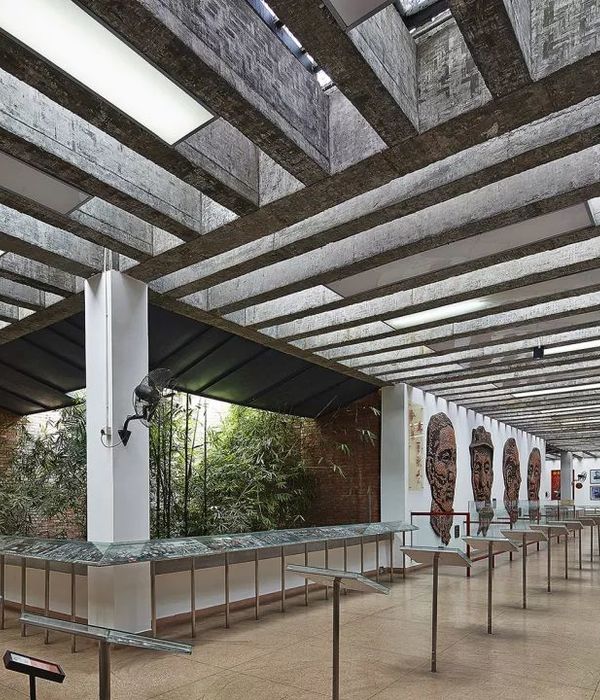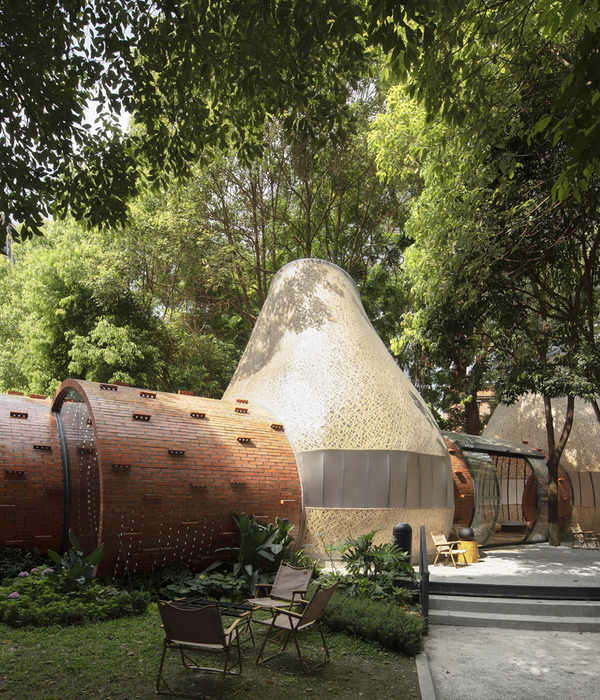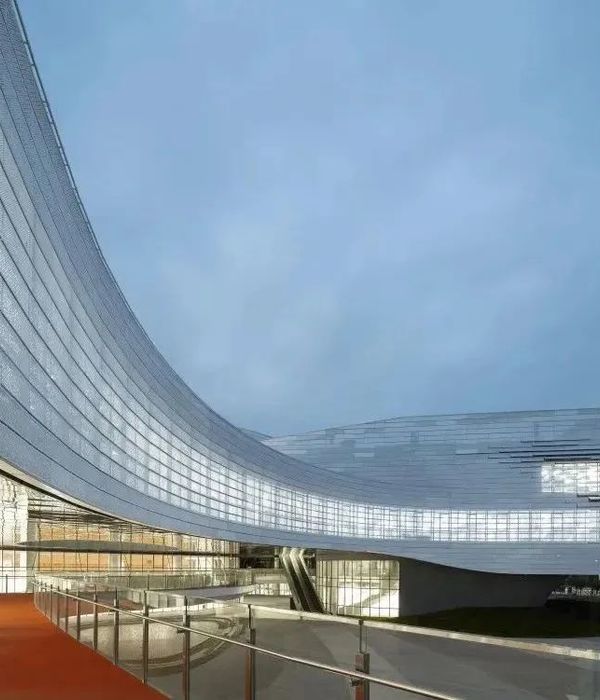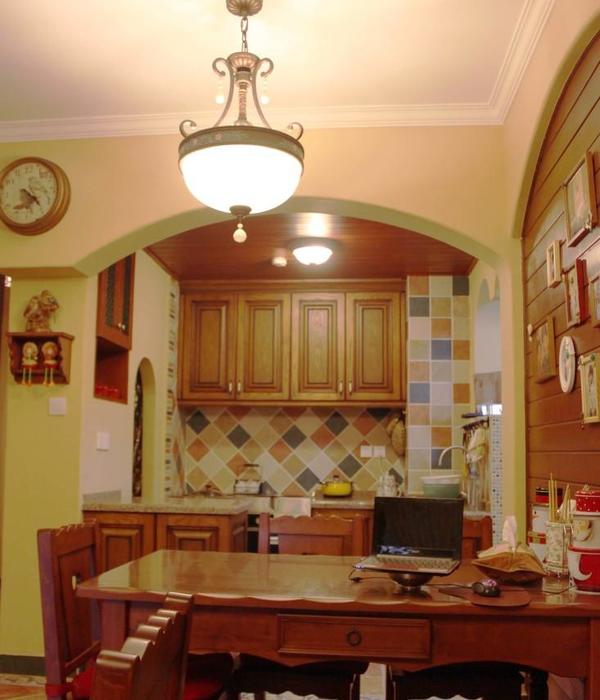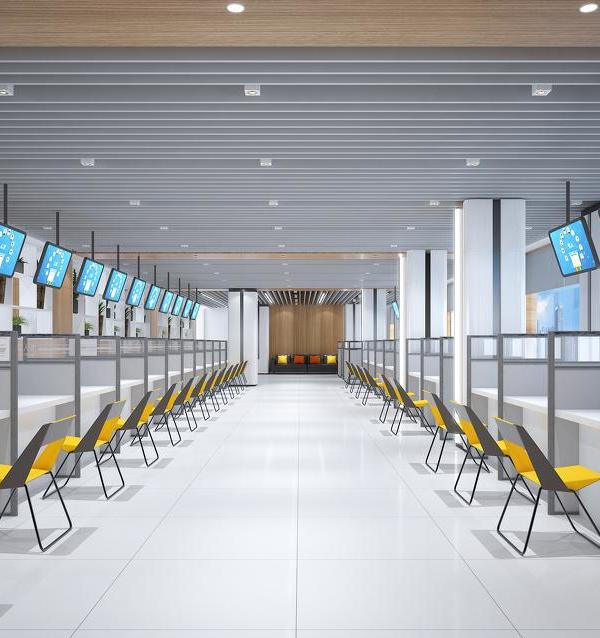本项目作为一座新的艺术博物馆和一座公共文化建筑,难能可贵地在城市中创造了一个新节点,不仅改变了城市环境的平衡,更促进了其周边区域的发展。马尔默艺术博物馆(Moderna museet Malmö, Malmö Museum of Art)位于瑞典南部的马尔默,该地区自1900年起就作为电力工厂,各类工业建筑鳞次栉比,这也为本项目创造了一个设计的契机,即设计一座不拘泥于形式和色彩、具有实验性质的新艺术博物馆,作为斯德哥尔摩地区内现有主博物馆的一个补充。
A starting point was that a new art museum, a public and cultural building, represents a rare opportunity to create a new node within the city, the urban balance is changed and the neighborhood develops. In Malmö, in the south of Sweden, there was also the possibility to, starting from the industrial architecture of the former Electricity plant dating from the year 1900, create a new art museum with an informal and experimental character that would complement the main museum in Stockholm.
▼博物馆外观,the exterior view
除了项目时间短(从项目伊始的草图设计到施工完毕只有18个月的时间),本项目所面临的最大的挑战便是使由砖打造而成的现有工业建筑适应当前的气候条件、满足安全要求,从而使其符合国际上艺术展览空间的最高要求。在项目开始后不久,建筑师团队便发现,本项目所需要的其实只是在现有的建筑外壳内重新打造一个建筑空间。这种彻底的、甚至是有些激进的改造概念不仅为本项目增加了新的挑战,同时也提供了新的机会。
The greatest challenge posed by the project, (in addition to the demanding eighteen-month time limit from sketch-design to inauguration), was the need to adapt the existing industrial brick building to current climatic and security requirements to comply with the highest international standards for art exhibition spaces. It soon became clear that in reality what was needed was a building within a building, a contemporary addition within the existing shell. This radical reconstruction not only provided a challenge, but also gave the opportunity for something new.
▼博物馆外观,使用醒目的橙色外表皮,the exterior view with the striking orange skin
从室外看,一个新的扩建体量标志着新博物馆的入口。该体量为博物馆提供了一个全新的入口、一个接待空间、一间自助餐厅以及位于上层空间的全新画廊空间。其橙色的穿孔板外表皮既与现有的砖结构体量相连,又为该区域增添了些许现代元素。穿孔板外表皮为外立面提供了视觉深度,其光影图案效果也为建筑增添了动感。扩建体量的首层外墙全部采用玻璃材料,因此,阳光便可以透过最外层的穿孔板和玻璃照进室内。
Seen from the exterior a new extension marks the arrival of the new museum. The extension provides a new entrance and reception space, as well as a cafeteria and a new upper gallery. Its perforated orange façade both connects to the existing brick architecture and introduces a contemporary element to the neighborhood. The perforated surface gives the façade a visual depth, and is animated through the dynamic shadow patterns which it creates. The ground floor is fully glazed so that sunlight is screened through the perforated façade.
▼博物馆外观局部,使用橙色的穿孔板作为外表皮,partial exterior view with the perforated orange façade
▼博物馆外观局部,穿孔板外表皮为外立面提供了视觉深度,partial exterior view, the perforated surface gives the façade a visual depth
就其周边环境而言,该艺术博物馆更多地考虑了建筑体量的尺度。从远处看,人们只能从颜色方面将其与临近的建筑区分开来,而凑近看时,人们便能欣赏到建筑及其细节处理。在本项目,建筑师消除了“中等规模尺度”的概念,从而加强了博物馆在其周边城市环境中的存在感,同时也让整座建筑成为一个标志,与马尔默联系在一起,形成一个有机的整体。
In relation to its context, the new addition plays with scale. From a distance it is only intelligible in comparison to the adjacent houses, only on close proximity the building and details can be read in its own right. The elimination of the standard ‘middle-scale’ strengthens the museum’s presence in the immediate urban setting, at the same time as letting the building appear as a signal establishing a relationship with Malmö as a whole.
▼博物馆室内餐厅局部,首层采用玻璃外墙,光线透过穿孔板照进室内,partial interior view of the restaurant with glazed ground floor, making sunlight screened through the perforated façade
▼首层餐厅外观,the restaurant on the ground floor
建筑师对博物馆的内部空间进行了重建。两座新的楼梯使得游客们可以在大型的涡轮式大厅和上层的展览空间之间以环线的形式来回往复地行走。这两座楼梯分为位于两个封闭的楼梯间内,值得一提的是,这两个封闭楼梯间将涡轮式大厅分为了三个独立的空间,除了主要的展览空间外,一个是儿童工作室,另一个则是独立的装卸载区(实际上,该区域也用于展览)。
Inside, the building has been spatially reconstructed. Two new staircases allow the visitor to move in a loop between the grand turbine hall and the upper exhibition rooms. The staircases are each enclosed between two walls, which functions to divide the program of the turbine hall into three separate spaces, housing in addition to exhibition spaces a children’s studio and a separate loading area (in fact also used for exhibitions).
▼白色方盒子体量的涡轮式展览大厅空间,the turbine hall in the form of white boxes
▼上层展览空间,the upper exhibition space
▼将涡轮式大厅分为三部分的封闭楼梯,the enclosed staircase that divides the program of the turbine hall into three separate spaces
与卡尔玛艺术博物馆(Kalmar Art Museum)一样,设计团队一直致力于提供一种灵活的、具有适应性的展览空间,使得艺术家和策展人能够根据需要,自行打造和布置展览场地。马尔默艺术博物馆则为他们提供了一系列白色的方盒子空间,从位于上层的通用尺度规模的画廊,到近11米高的独特的涡轮式大厅,空间充满灵活性。
As in Kalmar Art Museum, we have been committed to providing exhibition spaces which allow artists and curators to tailor the conditions to each individual exhibition. Moderna museet Malmö (Malmö Museum of Art) offers a series of white boxes; from the almost domestic scale of the upper gallery, to the Turbine Hall that boasts a unique space of almost eleven meters in height.
▼博物馆夜景,the night views
▼项目位置,the location
▼首层平面图,ground floor plan
▼二层平面图,upper floor plan
▼立面图,elevation
▼剖面A-A,section A-A
▼剖面E-E,section E-E
▼剖面H-H,section H-H
▼剖面J-J,section J-J
▼外墙构造细节局部,partial wall section drawings
Project name: Moderna Museet Malmö Location: Gasverksgatan 22, Malmö, Sweden. Start date: 2008 Completion date: 2010 (Public opening 26 December 2009) Project size: 2650 m2 Exhibition area: 925 m2 Architect: Tham & Videgård Arkitekter Chief Architects: Bolle Tham and Martin Videgård Project Architect: Mia Nygren Architects: Carmen Izquierdo Làzaro (Façade Architect), Helene Amundsen, Susanna Bremberg, Andreas Helgesson, Eric Engström, Mårten Nettelbladt, Marcus Andrén, Dennis Suppers, Alina Scheutzow, Suzanne Prest, Julia Gudiel Urbano. Client: Stadsfastigheter i Malmö User: Moderna Museet (Lars Nittve, Ann-Sofi Noring, Fredrik Liew) Contractor: NCC Construction
{{item.text_origin}}

